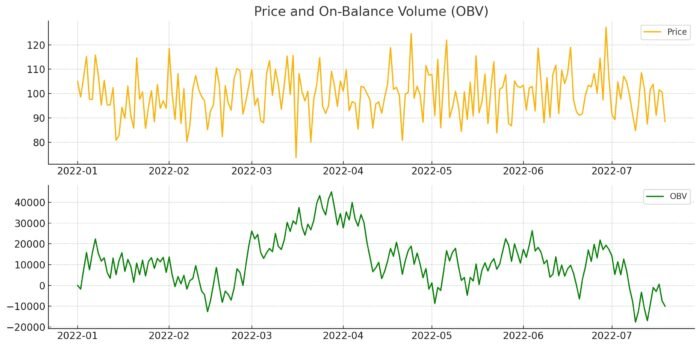Warren Buffett is a name that resonates with virtually anyone who’s heard of the stock market. Often referred to as the “Oracle of Omaha,” Buffett has become one of the wealthiest individuals on the planet—an icon whose financial wisdom has guided countless investors. But what exactly underpins his incredible success? Is it uncanny market timing, access to endless capital, or perhaps an innate ability to foresee economic shifts?
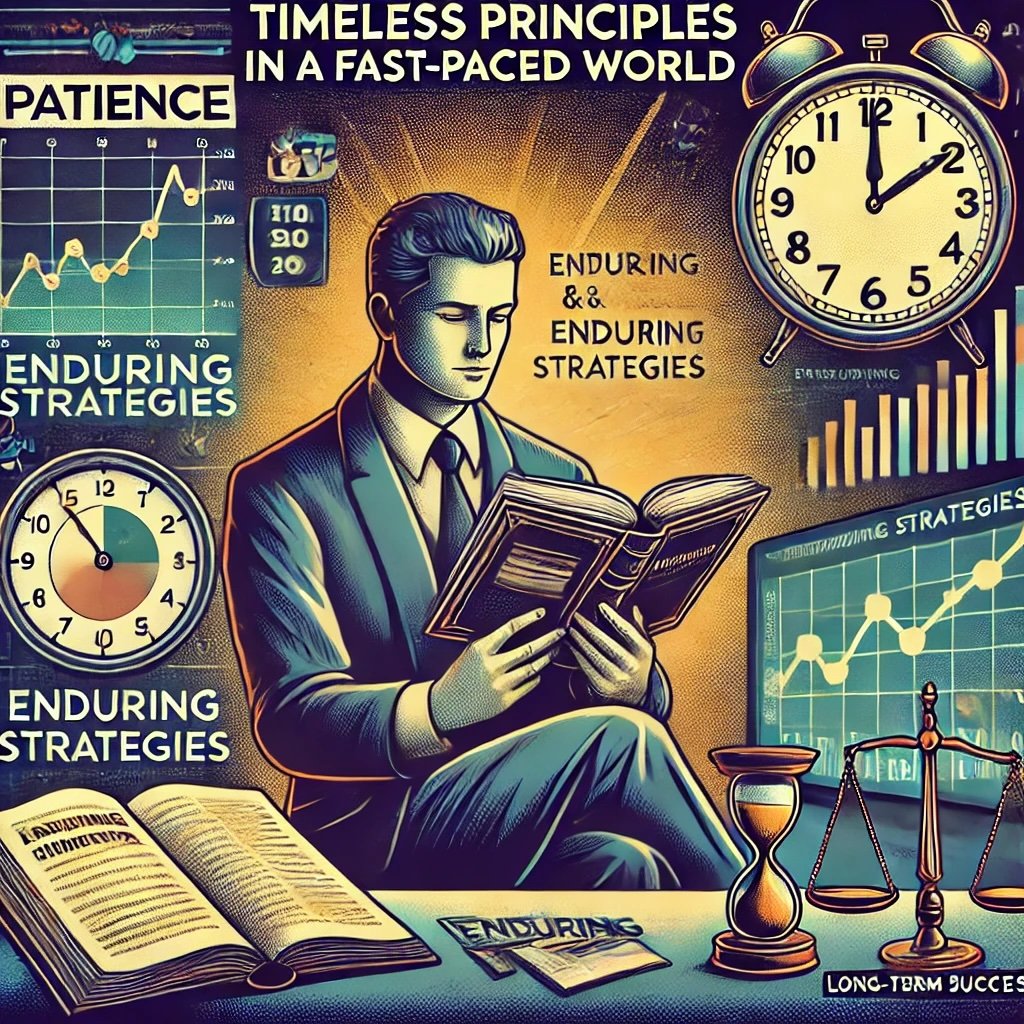
While Buffett does benefit from substantial capital resources and decades of market experience, the true bedrock of his achievements lies in two qualities that are more psychological than financial: patience and discipline. These traits, practiced consistently over decades, have allowed him to withstand bear markets, ignore the siren song of fads, and capitalize on opportunities that most investors either fail to see or are too fearful to seize.
In a world that often celebrates speed and instant gratification—where social media underscores the “get rich quick” mania, and day trading can seem appealing—the virtues of patience and discipline might appear old-fashioned. Yet Buffett’s track record affirms that certain timeless behaviors remain potent in any era. His approach doesn’t hinge on a secret algorithm or arcane knowledge. Instead, it relies on principles accessible to anyone willing to internalize them.
A quick look at Buffett’s portfolio over the years underscores the importance of these traits. He didn’t accumulate stakes in companies like Coca-Cola or American Express by chasing fleeting market trends. Rather, he patiently waited for the right price, then held those investments for many years, letting compounding do the heavy lifting. Discipline kept him from selling during market dips or following speculative bubbles. This synergy between patience and discipline informs everything he does—from analyzing a company’s fundamentals to navigating economic downturns.
![]()
But why do patience and discipline matter so much, especially in the high-stakes environment of investing? Think about the psychology of money. People are prone to emotional reactions: euphoria when stocks soar, panic when they slump. In times of turmoil, many investors rush to sell, locking in losses. Conversely, in frothy bull markets, they chase improbable gains, overpaying for assets that lack real value. Buffett’s ability to remain steady, carefully weighing decisions against the intrinsic value of a business, confers a form of emotional insulation. He’s not swayed by the crowd, even when the crowd roars.
Ultimately, patience and discipline go beyond investment performance. They foster tranquility in your financial journey, buffering you against impulsive decisions driven by fear or greed. And as we’ll see, that sense of calm and clarity can be as rewarding as monetary returns in a world teeming with financial anxiety.
![]()
Understanding Buffett’s Investment Philosophy
Warren Buffett’s investment philosophy stands on a few simple, yet powerful tenets. Far from being an arcane secret, these principles revolve around clarity, rationality, and practicality. And while he has indeed refined and adjusted his approach over the decades, the core remains surprisingly consistent.
The Value of Simplicity
At the heart of Buffett’s strategy is an insistence on simplicity. He avoids overly complex instruments, such as highly leveraged derivatives or murky business models with questionable revenue streams. Instead, he zeroes in on companies whose basic operations he can comprehend. This preference for clarity allows him to gauge a company’s competitiveness, management quality, and earning potential without getting lost in convoluted financial schemes.
But why is simplicity so vital? It underscores that if an investment requires elaborate justifications and labyrinthine structures, it might not be as sturdy as it seems. In times of market stress, complicated ventures can unravel swiftly, revealing hidden liabilities or mismatched incentives. Buffett’s simpler holdings, in contrast, typically revolve around consumer goods, financial services, insurance, utilities, and railroads—sectors that provide essential products and services with predictable demand.
Focus on Intrinsic Value
Another pillar of his philosophy is the emphasis on intrinsic value. Buffett strives to buy stocks (or entire companies) when their price dips below what he calculates to be their true worth. This margin of safety—paying less than a rational estimate of real value—serves as a cushion against the unforeseeable. If the market temporarily undervalues a solid company, Buffett steps in. Should the broader market remain irrational for a while, he’s content to wait, confident that eventually, valuations and fundamentals will realign.
The process of determining intrinsic value involves studying financial statements, scrutinizing earnings, examining market share, and gauging the sustainability of a company’s competitive advantages (often referred to as “economic moats”). Yet beyond the arithmetic, there’s also a qualitative element: understanding the business model, the leadership, and the brand’s staying power. Buffett famously invests in brand-driven companies like Coca-Cola or Apple, trusting that brand loyalty or ecosystem lock-in underpins steady profits.
Long-Term Perspective
Buffett’s approach is incomplete without the crucial dimension of long-term perspective. While many investors chase quick trades or fleeting trends, Buffett invests as though he plans to hold forever. This viewpoint does more than reduce trading costs. It frees him to make level-headed choices unaffected by daily market gyrations or sensational headlines. By focusing on the multi-year or multi-decade arc of a company’s performance, Buffett sidesteps impulsive moves.
He often remarks that if you’re not prepared to own a stock for 10 years, you shouldn’t own it for 10 minutes. This stance directly combats the short-termism that drives many to bail out at the first sign of trouble or overpay during frenzies. By aligning his strategies with a longer timeframe, he taps into the magic of compounding, letting modest annual growth accumulate into hefty returns over time.
How Patience and Discipline Fit In
Now, how do patience and discipline insert themselves into this philosophy? They provide the psychological framework that enables Buffett to adhere to these principles. Without patience, he might abandon a carefully picked stock if its price stagnates for months or years. Without discipline, he might succumb to hype, diverging from his intrinsic value focus. Essentially, patience upholds the willingness to wait for the right pitch, while discipline enforces boundaries to avoid straying into confusing or overhyped territories.
In simpler terms, his philosophical pillars—simplicity, intrinsic value, and long-termism—depend on these psychological traits for consistent application. The result is a cohesive strategy: find comprehensible, high-quality businesses, purchase them at a discount to their real worth, and hold them long enough for the market to reflect that worth accurately.
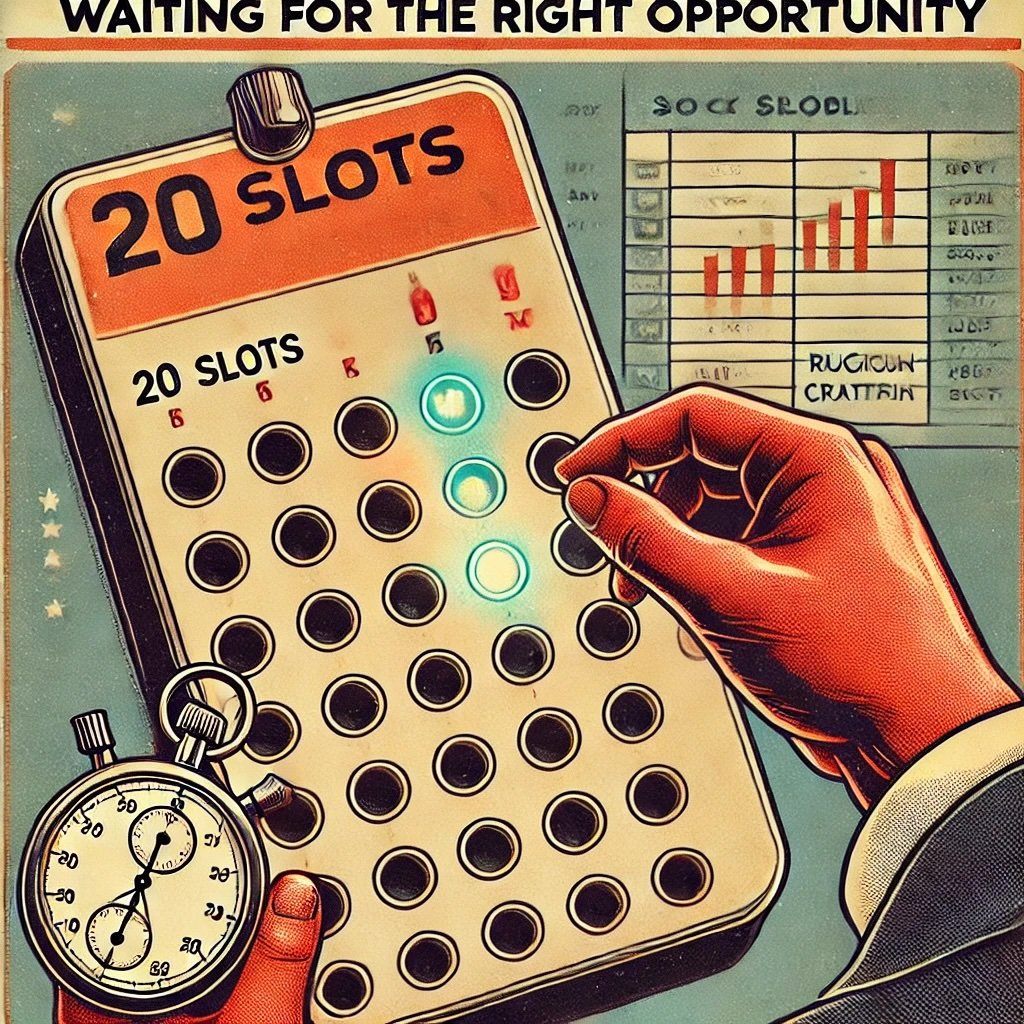
Patience: The Foundation of Buffett’s Success
Patience might seem like a gentle, almost passive quality, but in Warren Buffett’s hands, it becomes a strategic powerhouse. Where many see missed opportunities or the fear of “falling behind,” Buffett sees potential advantage in waiting, calmly observing markets until a truly opportune moment emerges. This principle underlies everything from his approach to individual trades to the expansive acquisitions Berkshire Hathaway undertakes.
Waiting for the Right Opportunity
In Buffett’s view, one must be extremely selective about the chances one takes. He’s famously used the analogy of a “20-slot punch card,” telling investors to imagine they only get 20 major investment decisions in their lifetime. Each time they purchase a company, they “punch” one slot. Once they’ve used all 20, no more investments are allowed. This thought experiment forces an investor to focus intently on each prospective choice, ensuring it meets rigorous criteria.
Why is patience critical here? Because if you can only invest 20 times, you won’t squander a single move on speculation or half-baked analysis. Instead, you’ll wait. For individuals or institutions that mirror this mindset, the willingness to pass on 99% of opportunities fosters better decisions. You’re not caving to the pressure of “doing something” every time the market hiccups.
The Power of Compounding
Compounding is often hailed as the eighth wonder of the world. Its essence is that reinvested gains generate more gains, creating an exponential growth curve. However, compounding requires time—lots of it. If you’re constantly selling positions to chase new fads, you interrupt this process, losing potential returns. Buffett’s habit of buying high-quality stocks and holding them for years, even decades, exemplifies how patience intersects with compounding.
For instance, consider his long-standing position in Coca-Cola. While Coke isn’t a tech rocketship, it consistently pays dividends and remains a household name. Over multiple decades, those dividends, reinvested, have multiplied his stake many times over. Short-term-minded investors may overlook such slow-but-steady earners for flashy tech plays, sometimes reaping quick gains but missing out on the profound effect of compounding. Buffett never aims for a quick flip; his patience ensures compounding can perform its magic uninterrupted.
Staying the Course Through Market Downturns
Market downturns test everyone’s nerves. Stock prices plunge, headlines scream doom, and gloom overshadows reason. Many investors panic-sell, often locking in losses right before the market rebounds. Buffett, however, rides out these storms with remarkable calm. He knows that if the underlying business remains solid, its share price will likely recover. Instead of viewing a downturn as a calamity, he often sees it as a chance to buy more shares at a discount.
This composure stems from a deep-rooted patience—an assurance that markets are cyclical and that ephemeral declines don’t invalidate years of fundamental growth. It also stems from his broader viewpoint on investing as partial ownership of a business. If the business is sound, why sweat the short-term slump? This attitude has allowed Buffett to amass immense wealth precisely because he didn’t flee during the inevitable downturns.
The Subtlety of Patience
Notably, patience doesn’t mean perpetual inaction. Buffett will wait months or even years between major investments, but when the right moment arises—perhaps a stock he’s watched trades below intrinsic value—he acts decisively. In this sense, patience is the prelude to a strong, confident strike. Without the lull of waiting, one can’t properly calibrate when to lunge forward.
For smaller investors, embodying this trait might mean resisting the impulse to check your portfolio daily or not jumping ship the instant a favorite stock dips by 10%. Instead, you review your original thesis: Has anything materially changed? If not, the better move might be to hold or even add to your position. Over time, you’ll likely see that your patience, though occasionally tested by market drama, yields better outcomes than constant maneuvering.
![]()
Discipline: A Steady Hand in an Uncertain Market
Patience allows Warren Buffett to wait for the right pitch. Discipline, however, is what ensures he swings only at pitches aligned with his core principles. Whereas patience is about timing and forbearance, discipline is about consistently applying a set of rules and standards. In other words, discipline tells him not to deviate from tried-and-true methods, especially when market headlines or social pressures tempt him to act otherwise.
Avoiding Emotional Decisions
Discipline in Buffett’s worldview is closely tied to controlling emotional reactions. Whether the market is on a euphoric upswing or sliding down in panic, he keeps a level head by sticking to fundamental metrics: earnings, cash flows, management quality, and competitive advantages. While others might hype a stock because it’s “going to the moon,” Buffett remains skeptical until the data supports such optimism.
This stance spares him from piling into hot stocks at their peak or panic-selling quality holdings during corrections. Time and again, history shows that emotional trades, spurred by either greed or fear, often lead to dismal results. Buffett’s disciplined approach effectively quarantines him from these emotional extremes, allowing him to focus on whether a business remains a solid, long-term proposition.
Sticking to Core Principles
Long before a market meltdown or a headline-grabbing IPO, Buffett has laid out in clear terms what he expects from an investment. For instance, he rarely invests in companies carrying excessive debt or ones operating in fields he doesn’t understand. These precepts function like guardrails, preventing hasty decisions when faced with enticing but risky deals. It’s not that he never strays at all—he admits to mistakes—but having explicit, well-defined criteria reduces the likelihood of missteps.
One might think of discipline as a personal “user manual” for investing. If a potential stock fails his tests—like insufficient free cash flow or murky accounting—Buffett will pass, no matter how many analysts tout its “untapped potential.” He trusts his system more than market chatter. Over the long haul, this unwavering adherence reaps benefits: fewer blow-ups, more stable gains, and a reputation for reliability among those who follow him.
Saying “No” to Most Opportunities
Buffett’s discipline also manifests in his remarkable selectivity. The majority of opportunities that come his way end in a polite, but firm, rejection. As a high-profile figure, he’s undoubtedly bombarded with proposals—startups, expansions, exotic financial instruments, and more. However, he invests only when an idea fits snugly into his circle of competence, and the price is right compared to intrinsic value. Otherwise, he’s comfortable waving it off.
In a culture that often prioritizes ceaseless action—buying, selling, trading—Buffett’s capacity to say “no” stands out. It preserves not just his financial capital (by avoiding marginal bets) but also his mental capital, so he can focus on truly promising ventures. For retail investors, learning to refuse subpar deals is equally crucial. Even if you feel you must constantly be “in the game,” remember that skipping the wrong deal is as important as finding the right one.
The Benefits of Discipline in a Noisy Environment
Financial markets can be chaotic, spewing contradictory information at every turn. Economic forecasts, news flashes, and social media chatter swirl together, creating an atmosphere of perpetual motion. Discipline serves as a filter. If you’ve determined your acceptable risk levels, your valuation methods, and your target industries, you can keep scrolling past news that doesn’t align with those interests. You can respond to market instability with measured calm rather than panic or euphoria.
Consider a scenario: a well-known tech stock doubles within a short span, hitting record highs daily. The hype intensifies, and many investors fear missing out. Buffett would likely revisit his discipline, asking if the stock’s fundamentals have truly changed to justify the leap. If not, he’d abstain—no matter how enticing the rally looks on the surface. This demonstrates how discipline’s function is not to stifle you but to guide you away from misguided leaps, even when everyone else appears to be taking them.
In essence, discipline is patience’s partner in crime. While patience tells you to wait, discipline dictates the rules for when you finally decide to make a move. Together, they’re the twin pillars that uphold Buffett’s success across market cycles.
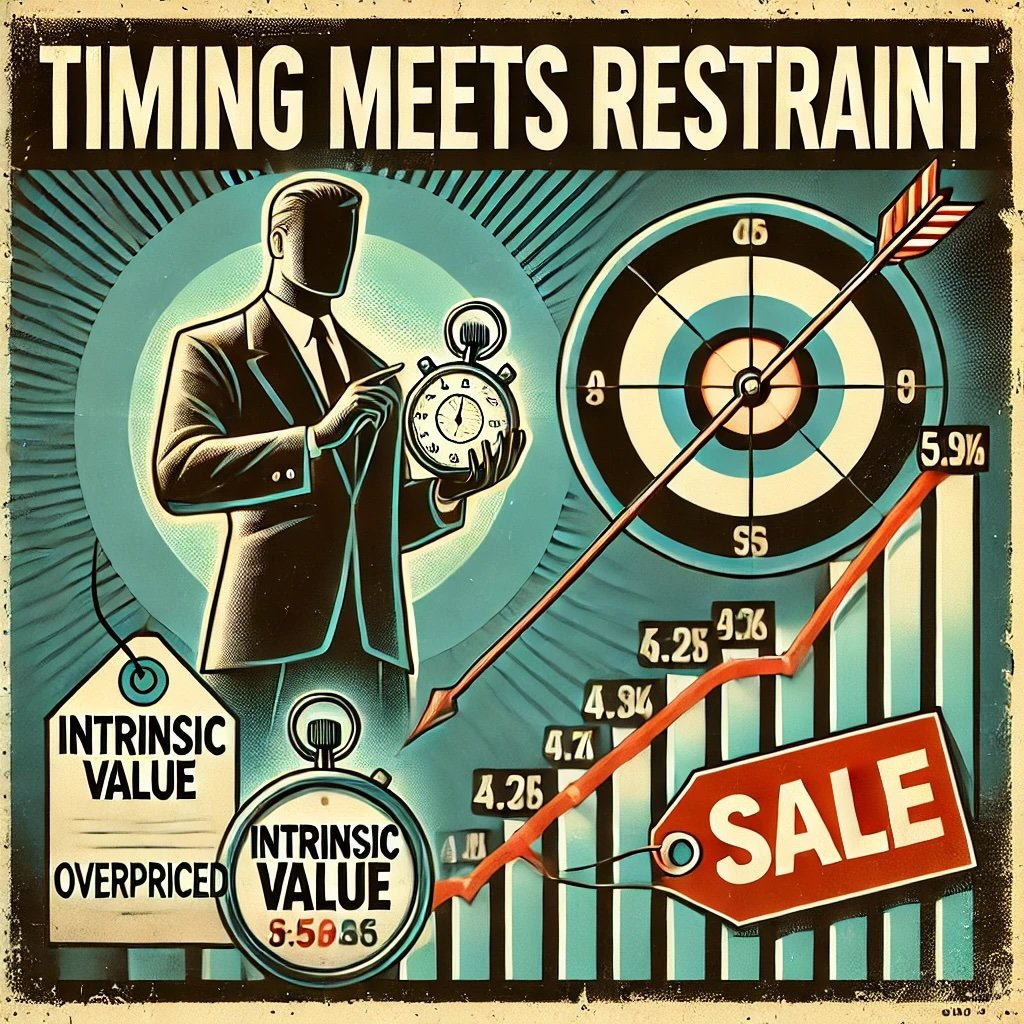
The Synergy of Patience and Discipline
Patience and discipline rarely operate in isolation within Warren Buffett’s strategy. Instead, they intertwine to form a cohesive whole, each amplifying the other’s impact. Patience can prevent you from leaping into suboptimal deals too soon, but without discipline, you might eventually cave to emotional temptations. Discipline alone can keep you from dabbling in ill-suited ventures, but lacking patience, you might still succumb to impatience when market fluctuations test your resolve.
Timing Meets Restraint
To illustrate, picture Buffett patiently observing a high-potential stock. The company is strong, but he judges its share price to be above intrinsic value. If he were less patient, he might purchase the stock anyway, fearing it might never drop to his ideal range. If he were disciplined but impatient, he could set an arbitrary price target that’s only marginally below current levels, ignoring his own valuation. Instead, Buffett merges patience (the willingness to wait until the market eventually lowers the price) with discipline (sticking to that predetermined target). When the price does align with his range—often amid market sell-offs—he moves swiftly and confidently.
On the flip side, consider how discipline bolsters patience. When markets start soaring and every headline screams about unstoppable bull runs, people often lose patience. They jump in, chasing the bubble. Buffett’s discipline, forged by clear criteria for valuations, prevents him from joining that spree. He remains calm, content to watch from the sidelines until the inevitable correction brings prices back to or below fair value. Hence, discipline helps him remain steadfast when market mania threatens to override his sense of timing.
Avoiding the Noise
In a short-term news cycle, where stock prices can swing wildly on daily headlines, patience ensures you’re not swayed by ephemeral data. Discipline ensures that even if the noise is persistent and seductive, you don’t deviate from your strategy. Think of them as two halves of a protective shield. Patience deflects the emotional blow of seeing stocks dip or surge in the short run, while discipline guards you against fear-based selling or hype-driven buying.
Also, synergy shines through in how Buffett deals with investor questions about missed opportunities. People sometimes accuse him of “sleeping on” major trends. But he counters that if an opportunity doesn’t fit his circle of competence or if the valuations are inflated, he’d rather stay out than risk capital on a whim. This approach has prevented enormous losses, especially in scenarios like the dot-com bubble. When the bubble burst, those who had jumped in without discipline (and with little patience) suffered major losses. Meanwhile, Buffett’s synergy of patience and discipline kept him relatively unscathed and ready to capitalize on undervalued businesses afterward.
Case Studies: Coca-Cola and Apple
Two prime illustrations of these traits in action are Buffett’s investments in Coca-Cola and Apple. For Coca-Cola, he waited until the late 1980s to accumulate a large stake, a point where he deemed the price attractive relative to the company’s enduring brand and stable cash flows. Then, he held the position for decades, resisting any urge to sell during periodic downturns. This combination of waiting for the right entry (patience) and never succumbing to short-term negativity (discipline) turned Coca-Cola into one of Berkshire Hathaway’s most profitable holdings.
Apple provides a more recent example. For years, Buffett avoided tech companies, fearing their business models were too volatile. But as Apple evolved into a consumer-electronics ecosystem with robust services revenue, it fell squarely within his circle of competence. When Apple’s valuation dipped to what he deemed a favorable point, he stepped in, purchasing shares that eventually soared, turning that stake into another massive winner. Here again, patience (not investing in tech for years) intersected with discipline (buying only after Apple proved its staying power and brand moat).
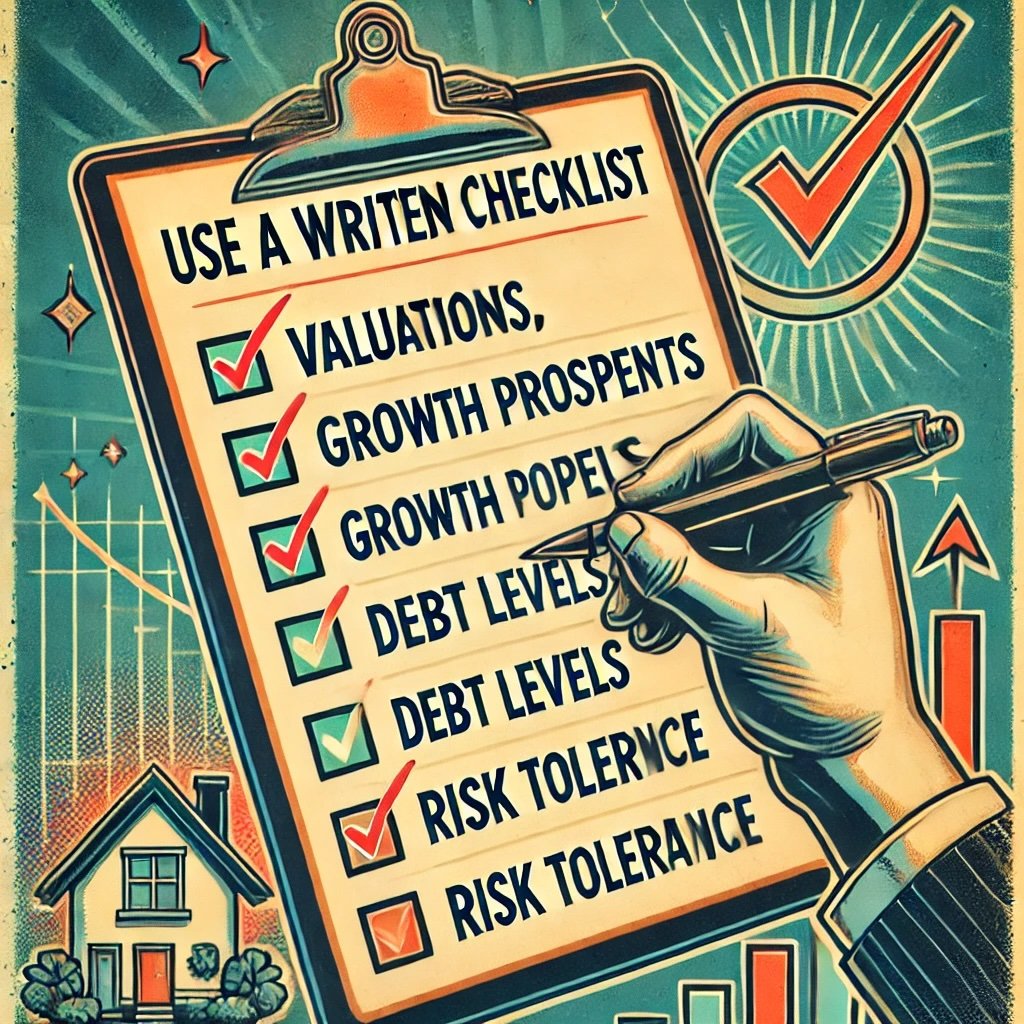
Lessons for Everyday Investors
The parallels between Warren Buffett’s high-profile decisions and the choices everyday people face might not be obvious at first glance. After all, few of us manage multi-billion-dollar portfolios or hold controlling stakes in household-name companies. Yet, the underlying psychology—anchored by patience and discipline—translates remarkably well to smaller-scale investing and personal finance. Below are a few concrete ways you can adopt these traits to enhance your financial journey.
Adopt a Long-Term Mindset
One immediate step is reframing your timeline for results. Instead of looking for quick gains within weeks or months, set multi-year objectives. That might mean deciding you’ll hold a well-researched stock or fund for at least five years unless fundamental shifts undermine its value proposition. This forward-looking perspective encourages you to see beyond market dips, turning them from crises into opportunities for additional buying. Emulate Buffett’s patience by reminding yourself that real wealth often stems from compounding over time, not from fleeting speculation.
Build Emotional Discipline
Manage Fear and Greed
During market surges, it’s tempting to chase hot stocks—especially if friends or social media buzz suggests they’re unstoppable. On the flip side, in a downturn, the fear of losing everything can urge you to liquidate positions at a loss. To tame these impulses, consider implementing a “cooling-off” rule: after deciding to buy or sell, give yourself a 24-hour waiting period. If, after that window, the logic still holds, proceed. This short pause can prevent knee-jerk decisions fueled by ephemeral news or groupthink.
Use a Written Checklist
Adopt a checklist approach to investing or big financial moves—like purchasing real estate or launching a business. Outline the essential criteria: valuations, growth prospects, debt levels, competitive advantages, and alignment with your personal risk tolerance. Don’t finalize the transaction unless each item meets your thresholds. This system echoes Buffett’s disciplined approach, where you filter out opportunities that fail to meet established standards.
Practice Selectivity
The “20-Slot Punch Card” Exercise
Even if you don’t literally limit yourself to 20 lifetime investments, imagine you do. This mental exercise amplifies the gravity of each choice, discouraging you from scattershot, impulsive behaviors. You become more inclined to wait for investments that you deeply understand and strongly believe in, bypassing questionable ventures that might appear compelling on the surface.
Focus on Industries You Know
Sticking to what Buffett calls your “circle of competence” applies even to small portfolios. If you work in the healthcare sector, you might have insights into which pharmaceutical companies have robust pipelines or advanced R&D capabilities. If you’re a tech enthusiast, you might better discern which software firms have loyal developer communities. By honing in on these areas, you reduce the chance of investing in something you can’t fairly evaluate. Patience ensures you don’t panic if the sector experiences a lull; discipline ensures you don’t buy into hype-laden spin-offs that don’t fulfill your fundamental criteria.
Develop a Battle Plan for Downturns
Buffett’s calm in the face of crashing markets is no accident. It’s rooted in a plan—both mental and logistical—for how to respond. For an average investor, this might involve maintaining an emergency fund so you’re not forced to sell investments at a low point to cover unexpected expenses. It could also entail creating a list of stocks you’d love to own at certain valuations. If a downturn strikes, you have a reference sheet telling you which companies you want to buy and at what price, thereby converting emotional chaos into an actionable roadmap.
Consistency Over Perfection
Buffett doesn’t bat 1.000. He’s publicly admitted mistakes like buying stock in Dexter Shoe or missing out on significant opportunities. Yet, his overall success underscores that you don’t need to be flawless—just consistently prudent. For personal finances, this translates to acknowledging that not every stock pick or financial endeavor will be a home run. The key is to ensure your average outcomes lean strongly positive by adhering to your patient, disciplined framework.
Final Thoughts for Implementation
Incorporating patience and discipline into your financial habits doesn’t happen overnight. You might grapple with the urge to chase a rumored “10x stock,” or feel tempted to panic when a market correction erodes your portfolio’s value. Yet every time you resist those impulses and stick to your plan—rooted in long-term perspective and solid fundamentals—you strengthen the habits that mirror Buffett’s success.
Ultimately, the combination of patience and discipline forms a stable base upon which other virtues—like emotional intelligence, humility, and a dedication to continuous learning—can be built. In forging these traits within yourself, you follow in the footsteps of one of history’s greatest investors, not by copying his stock picks, but by replicating the psychology that underlies his decision-making. By doing so, you’ll be better prepared for both market booms and busts, ensuring your financial journey is not just profitable, but also less fraught with anxiety.
For everyday investors, the big takeaway is that you don’t need a fortune to adopt these mental tools. Even with modest capital, you can establish a long-term plan, meticulously vet each opportunity, and control your emotional impulses by focusing on data over drama. You can hold onto investments that meet your standards of intrinsic value, resisting the urge to sell in panic or chase ephemeral gains. Over time, these behaviors inculcate a mindset akin to Buffett’s, one that fosters consistent, if measured, progress toward financial goals.
Patience and discipline also resonate beyond money matters. They enrich how we tackle our careers, relationships, and personal growth, urging us to slow down, weigh decisions carefully, and remain steadfast to core principles. While not a guarantee of effortless success, embodying these traits significantly improves the odds that you’ll thrive under pressure and seize meaningful opportunities when they surface.
In short, if you’re looking to fortify your financial journey, start by cultivating these psychological strengths: be patient, be disciplined, and let the synergy of both guide your actions. Over time, you may find that the results echo Buffett’s enduring mantra: success doesn’t require constant motion, but rather a calm sense of when to act—and when to wait.
The Role of Patience and Discipline in Warren Buffett’s Strategy: 12-Question FAQ (Mindset Before Mechanics)
How do patience and discipline practically show up in Buffett’s day-to-day investing?
Through long holding periods, few but high-conviction decisions, and pre-committed rules (e.g., demand a margin of safety, avoid excess leverage, stay within the circle of competence). He’d rather do nothing than do something mediocre.
Why does Buffett say inactivity can be an edge?
Because time is the friend of a wonderful business. Inactivity lets compounding work, reduces mistakes, taxes, and fees, and keeps emotions from triggering costly churn.
What is the link between discipline and Buffett’s “circle of competence”?
Discipline enforces the boundary: only act where you can value with confidence. If he can’t explain how cash flows will be generated, he passes—no matter how popular the idea is.
How does patience support buying with a margin of safety?
Patience gives him the willingness to wait for the price to come to the value, not the other way around. If quality is overpriced, he waits; if panic creates a discount, he’s ready.
How does Buffett keep emotions from hijacking decisions?
He pre-writes the playbook: focus on intrinsic value, moats, prudent balance sheets, and able managers. With criteria fixed before volatility hits, he avoids reactive trades.
Why does he hold cash even though it drags returns in bull markets?
Cash is optionality. It prevents forced selling in drawdowns and funds opportunistic buying when great businesses get mispriced.
How do patience and discipline work together in sell decisions?
He rarely sells a compounding franchise. He’ll trim or exit only if: (1) fundamentals/management quality deteriorate, (2) valuation becomes egregiously detached, or (3) he has a clearly superior, like-for-like alternative.
What role does temperament play relative to analysis?
Analysis sets the target; temperament (patience + discipline) keeps the arrow flying straight. Markets test nerves more than IQ—stability under stress is a competitive edge.
How does Buffett avoid FOMO during manias?
Discipline: stick to valuation and quality thresholds. Patience: accept sitting out bubbly phases. Missing a fad is cheaper than funding its aftermath.
How can individual investors copy this without Buffett’s resources?
Write a simple policy (asset mix, rebalancing bands, buy/sell criteria), build a watchlist with fair-value ranges, dollar-cost average, and use a 24-hour rule before non-scheduled trades.
What metrics best reinforce disciplined patience?
Consistency in free cash flow, ROIC above cost of capital, conservative leverage, stable or widening moat signals (retention, pricing power), and owner-oriented managers.
What’s the biggest mistake patience and discipline help you avoid?
Permanent capital loss from chasing hype, overpaying, or panic-selling quality businesses during temporary drawdowns.
Important Information
Comprehensive Investment Disclaimer:
All content provided on this website (including but not limited to portfolio ideas, fund analyses, investment strategies, commentary on market conditions, and discussions regarding leverage) is strictly for educational, informational, and illustrative purposes only. The information does not constitute financial, investment, tax, accounting, or legal advice. Opinions, strategies, and ideas presented herein represent personal perspectives, are based on independent research and publicly available information, and do not necessarily reflect the views or official positions of any third-party organizations, institutions, or affiliates.
Investing in financial markets inherently carries substantial risks, including but not limited to market volatility, economic uncertainties, geopolitical developments, and liquidity risks. You must be fully aware that there is always the potential for partial or total loss of your principal investment. Additionally, the use of leverage or leveraged financial products significantly increases risk exposure by amplifying both potential gains and potential losses, and thus is not appropriate or advisable for all investors. Using leverage may result in losing more than your initial invested capital, incurring margin calls, experiencing substantial interest costs, or suffering severe financial distress.
Past performance indicators, including historical data, backtesting results, and hypothetical scenarios, should never be viewed as guarantees or reliable predictions of future performance. Any examples provided are purely hypothetical and intended only for illustration purposes. Performance benchmarks, such as market indexes mentioned on this site, are theoretical and are not directly investable. While diligent efforts are made to provide accurate and current information, “Picture Perfect Portfolios” does not warrant, represent, or guarantee the accuracy, completeness, or timeliness of any information provided. Errors, inaccuracies, or outdated information may exist.
Users of this website are strongly encouraged to independently verify all information, conduct comprehensive research and due diligence, and engage with qualified financial, investment, tax, or legal professionals before making any investment or financial decisions. The responsibility for making informed investment decisions rests entirely with the individual. “Picture Perfect Portfolios” explicitly disclaims all liability for any direct, indirect, incidental, special, consequential, or other losses or damages incurred, financial or otherwise, arising out of reliance upon, or use of, any content or information presented on this website.
By accessing, reading, and utilizing the content on this website, you expressly acknowledge, understand, accept, and agree to abide by these terms and conditions. Please consult the full and detailed disclaimer available elsewhere on this website for further clarification and additional important disclosures. Read the complete disclaimer here.


